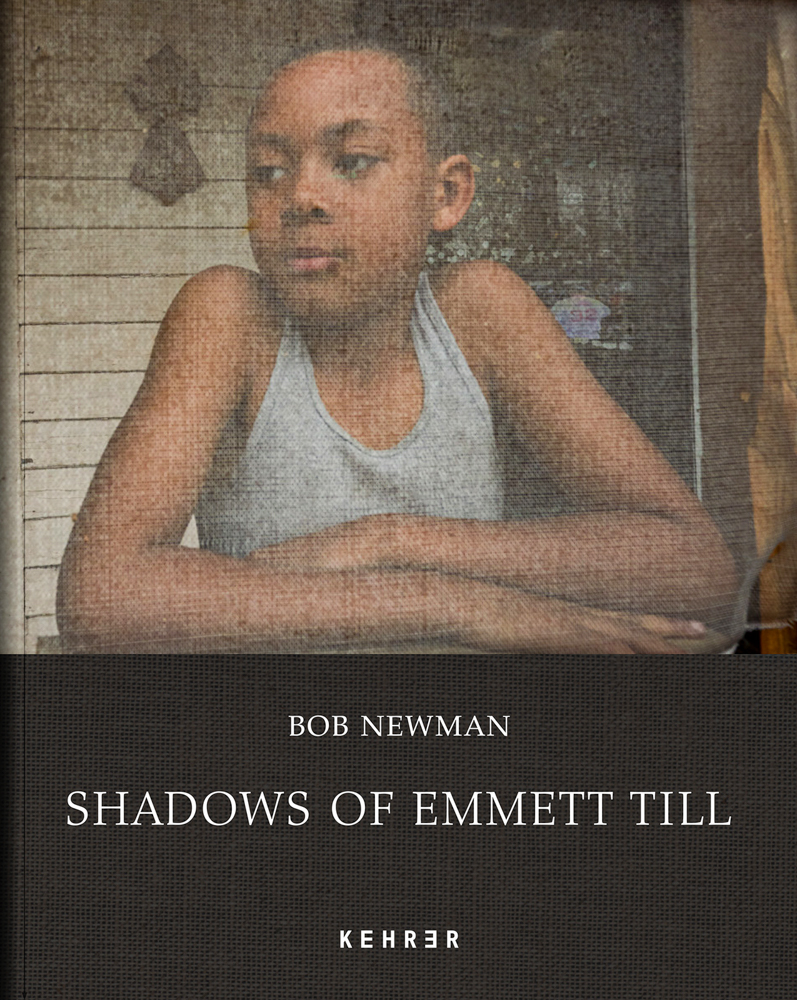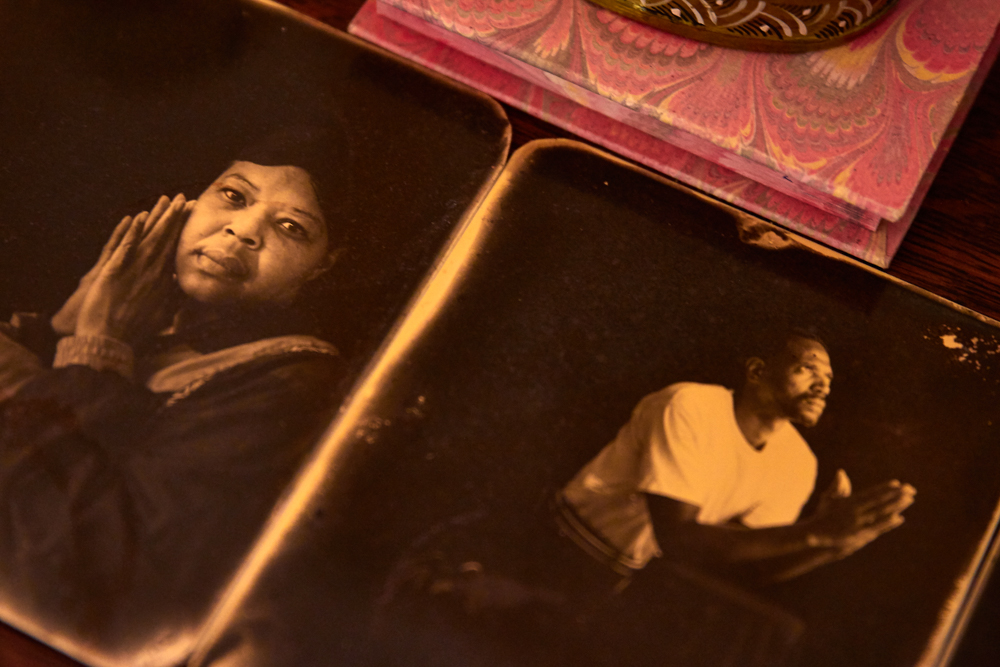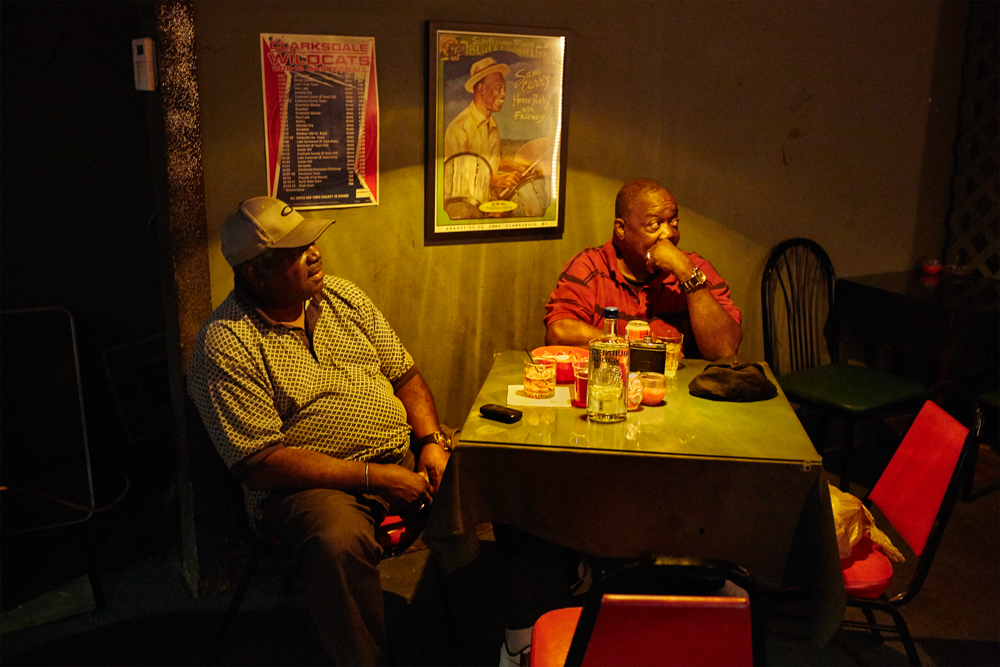Bob Newman: Shadows of Emmett Till
Over 67 years ago on the summer of August 28, 1955, 14-year-old Emmett Louis Till was tragically lynched in Mississippi by two white men, Roy Bryant and J.W. Milam after he was accused by Bryant’s wife, Carolyn Bryant, of allegedly making an advance at her. Bryant and Milam were tried and acquitted by an all-white-male jury. They later confessed to committing the heinous acts that they had previously denied.
There remains a variety of vital ongoing conversations revolving around the life and death of Emmett Louis Till. In Bob Newman’s recently released publication, Shadows of Emmett Till, published by Kehrer Verlag, he continues this discourse and actively confronts the complex past of America before Till’s unfathomable fate. The circumstances surrounding his death parallel the society we still exist in today where Black lives, such as Trayvon Martin, Sandra Bland, George Floyd, and a heartbreakingly long list of more Black Americans, are continuing to be unforgivably taken at the hands of racist white Americans.
Newman’s poetic approach to the unique format of his publication represents two sides of a shared story unveiling the remnants of the Mississippi Delta while Till was still alive and thereafter. He juxtaposes sourced archival black and white images depicting the political and economic state of the Mississippi Delta fueled by racial injustices from the late 19th to 20th centuries with his constructed contemporary imagery which is grounded and contextualized by essays and poems written by himself, W. Ralph Eubanks, Patricia Smith, and Kevin Young. The stark shift from the past to the present is chronological in its approach; however, it also stands as a quiet metaphor and somber reality that some things change, but many things have remained the same.
The inclusion of sourced archival photographs in the first half of the book further solidifies the importance of documenting the present and photography’s role in providing a record of the present for the sake of the future. They reveal the reality of the Mississippi Delta before and, for a stretch of time, after Till’s death—images depicting a myriad of “colored” signage, lynchings, and other significant markers of a more overtly racially divided American landscape than what we exist in today.
Newman’s striking color photography in the second half of the book gives the viewer a glimpse into the lives and environments of people in the Mississippi Delta today in the harrowing aftermath of the lynching of Till. The compelling, yet haunting landscapes devoid of people are invisibly marked with tragedy and death possessing stolen Black souls. Though the people depicted in his portraits of visibly varying age ranges serve as reminders of how young Emmett Till once was and his innocence with an imaginative longing for how he could have been and could have appeared at various ages—especially in old age.
It is worth noting that Newman carefully places imagery throughout the publication depicting moments of joy and photographs that feel reminiscent of deep breaths, reflections, and moments of stillness and quietness. While they are not overpowered by the moments where the viewer is presented with photographs and knowledge that evoke a mixture of sadness, anger, and a plethora of emotions in between, they are needed and provide necessary moments of rest. Out of the many ideas that Newman explores in his well-executed publication Shadows of Emmett Till, one tangential idea rings loudly: the past is always present and can never be avoided or escaped—not truly.
Edited by: Magdalena Solé
Texts by W. Ralph Eubanks and Bob Newman
Poems by: Patricia Smith and Kevin Young
Designed by: probsteibooks (Sabine Pflitsch, Andreas Tetzlaff)
Hardcover, two book blocks, Swiss binding, & various printing techniques
9 1/2” x 11 3/4” (24 x 30 cm), 140 color and 70 duotone illustrations
English
ISBN 978-3-96900-069-4
US – $90.00
THE BOOK MAY BE PURCHASED AT:
Bob Newman’s Website – Signed copies are available – $90.00
Amazon, Barnes & Noble and other fine bookstores
Kehrer Verlag – 68 Euros
Bob Newman is a retired physician who, for the past 15 years, has been working as a professional photographer engaged in long-term projects. His career in medicine, with a practice that served disadvantaged communities, guides his work as a visual storyteller. He is drawn to collaborating with members of marginalized communities to document the challenges they face and the richness of their cultures.
Recognizing the work in his Shadows of Emmett Till Project, International Photography Awards (IPA) selected him as Deeper Perspective 2021 Photographer of the Year and as a Jury Top Five Selection. His Shadows of Emmett Till book was published by Kehrer Verlag in 2022. In addition, the work was chosen for publication in the September 2022 issue of Dodho Magazine.
He received a LensCulture Critic’s Choice Award (2021) and was named a 2021 and 2022 Finalist for Photolucida Critical Mass. The Independent Photographer included his images as part of the “2021 Through 10 Compelling Photographs” Retrospective.
In 2020, he was named to the Critical Mass Top 50, Short Listed in the Portrait of Humanity Competition, named a Finalist in the Fresh Annual Summer Exhibition, and selected as Portrait Finalist at the Head On Photo Festival (Sydney, Australia). International Photography Awards (IPA) selected thirteen images of his for awards including Jury Top 5, First Place and Honorable Mentions.
He participated in VII Photo’s 2018-2019 Masterclass in Warsaw and the 2019 Eddie Adams Workshop. Additional awards received in 2019 recognizing the quality of his images include Travel Photography of the Year Finalist and International Photography Awards Best of Show & 1st Place Awards.
Follow on Instagram: @bob.newman1950 and @kehrervelag
The Mississippi Delta has been called “The Most Southern Place on Earth,” a region of layered histories that collide with each other on a daily basis. It’s a place that defines America and Americans like no other part of the country – a culture entwined with slavery, poverty, and political and economic oppression. It is the land that gave birth to the creative genius of Muddy Waters and B.B. King, and to the horror of the Civil Rights-era murder of young Emmett Till.
Shadows of Emmett Till seeks to probe that complex past: picturing the energy of a landscape that has bred both hatred and creativity, interrogating the whiteness that has always held power in its grip in a place that is predominantly Black, and observing the many ways the shadow of Till’s murder still hangs over the Delta. This is work that breathes the Delta air and seeks to frame the region and its people in a 21st-century context, at a time when white America may be starting to finally come to terms with the sins of its past.
The Mississippi Delta stretches from Memphis to Vicksburg. Hard times, hot humid weather, flooding, and destitution are facts of life. Since 2014, I’ve photographed in over 40 towns and roamed countless miles across the land. More than once, I’ve stood on the Black Bayou Bridge where Emmett’s body was thrown into the river and have worked to make a photo that honors him and his legacy. Again and again, I see the past spilling into the present. As I photograph the remnants of Emmett’s time, I am finding troubling parallels with George Floyd and so many others.
Posts on Lenscratch may not be reproduced without the permission of the Lenscratch staff and the photographer.
Recommended
-
Eli Durst: The Children’s MelodyDecember 15th, 2025
-
Kinga Owczennikow: Framing the WorldDecember 7th, 2025
-
Richard Renaldi: Billions ServedDecember 6th, 2025
-
Ellen Harasimowicz and Linda Hoffman: In the OrchardDecember 5th, 2025
-
Linda Foard Roberts: LamentNovember 25th, 2025






























































